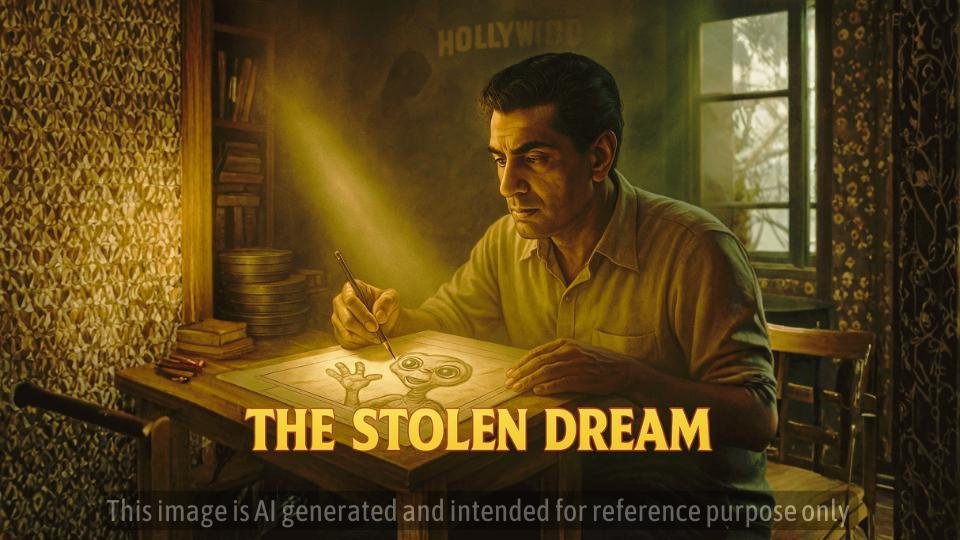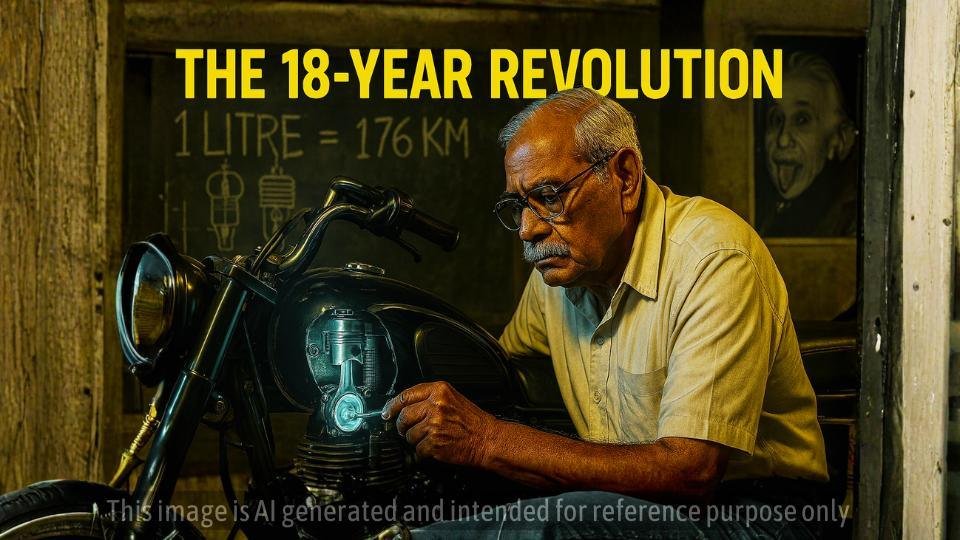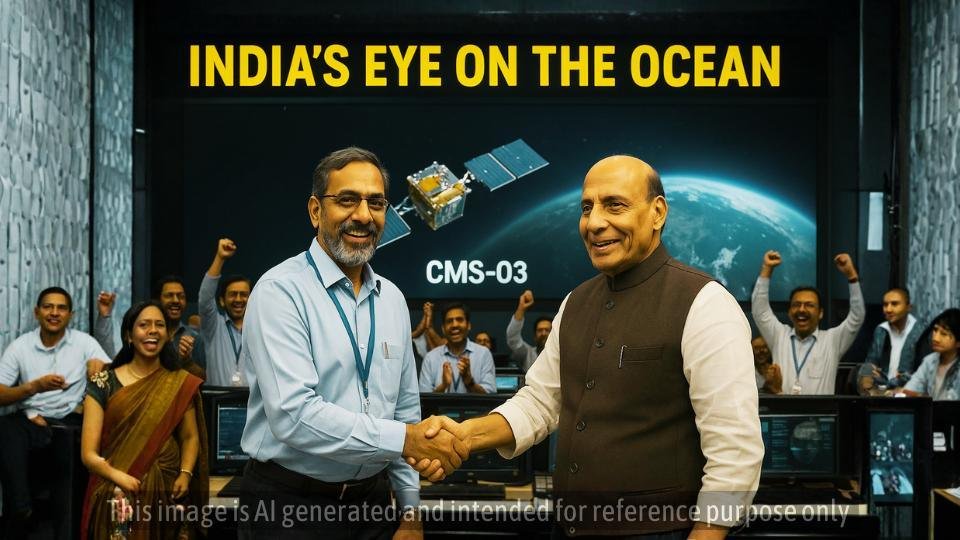कृपया इसे हिंदी में पढ़ने के लिए यहाँ क्लिक करें
How a Legendary Indian Filmmaker’s Dream Was Snatched and Turned into an Oscar-Nominated Classic
Every day, millions of people use the alien emoji 👽 without a second thought. It’s a fun, quirky symbol of otherworldly beings. But what if we told you that the concept for one of the most beloved aliens in cinematic history, whose story echoes through pop culture even today, wasn’t born in a high-tech NASA lab or a flashy Hollywood studio, but in the mind of an Indian genius in Calcutta? And what if we told you his creation was taken from him, only to reappear as a global phenomenon that would go on to receive Oscar nominations? This is the unbelievable but true story of a stolen dream.
The Visionary: Satyajit Ray and ‘The Alien’
The story begins in the 1960s with one of the greatest filmmakers of all time, Satyajit Ray. Long before the world met E.T., Ray wrote a brilliant and heartwarming screenplay titled “The Alien.” It was based on his own 1962 short story, “Bankubabur Bandhu” (Bankubabu’s Friend).
Ray’s alien was not an invader. He was a gentle, curious creature who lands his spaceship in a pond in a quiet Bengali village. Befriended by a young boy named Haba, this alien used his extraordinary powers for good—making flowers bloom and healing the sick. Ray, a master artist, even drew detailed sketches of his creation: a small, slow-moving being with a large head and soft, three-fingered hands. This was a vision of an extraterrestrial that was entirely new and full of empathy.
A Hollywood Dream Turns into a Nightmare
Eager to bring his unique story to a global audience, Ray took his script to Hollywood in 1967. Columbia Pictures showed interest, and for a while, it seemed like this groundbreaking Indian sci-fi film would be made. Unfortunately, the project fell into a complicated web of broken promises and misunderstandings. Though the film was never made by Ray, his detailed script, complete with the alien’s design, was widely copied and circulated throughout Hollywood studios for years. Ray himself stated that his script was “available throughout America in mimeographed copies.”
The Shocking Similarity: E.T. Lands on Screen
Fifteen years later, in 1982, the world was introduced to Steven Spielberg’s blockbuster, E.T. the Extra-Terrestrial. The film was a sensation and received numerous Oscar nominations. But when Satyajit Ray watched it, he was heartbroken. The similarities to his own script were staggering.
Famed science-fiction author Arthur C. Clarke was the first to call Ray and point out the uncanny resemblances. The parallels were impossible to ignore:
- The Story: A gentle, botanist alien lands on Earth and is befriended by a young, lonely boy in a small town.
- The Alien’s Design: Ray’s alien had slow-moving, three-fingered hands; E.T. had four-fingered hands with a similar movement. Both were small, with large, expressive heads.
- The Powers: Ray’s alien could make plants bloom and had healing powers. E.T. famously had the exact same abilities, reviving flowers and healing with a glowing finger.
Even Columbia Pictures, the same studio that had Ray’s original script, was a co-producer of E.T.
An Unacknowledged Legacy
While Steven Spielberg has denied the claims, stating he was “a kid in high school when his script was circulating,” the evidence remains a powerful testament to Ray’s pioneering vision. Ray, in his typically gentle manner, never took legal action but expressed his deep hurt, believing that films like E.T. and Close Encounters of the Third Kind would not have been possible without his original concept.
So, the next time you use that alien emoji 👽, remember the forgotten Indian pioneer who first imagined a friendly visitor from the stars. His vision, though uncredited, not only inspired an Oscar-nominated film but also fundamentally changed how the world sees life beyond our planet—proving that the most powerful ideas can travel across galaxies, even if their creators don’t always get the credit.
Social Message: Art and ideas know no borders. It is a universal language that connects us all. This story is a poignant reminder to honor and credit the original creators, no matter where they come from. It urges us to celebrate the pioneers whose quiet work laid the foundation for world-changing masterpieces.






Leave a Reply